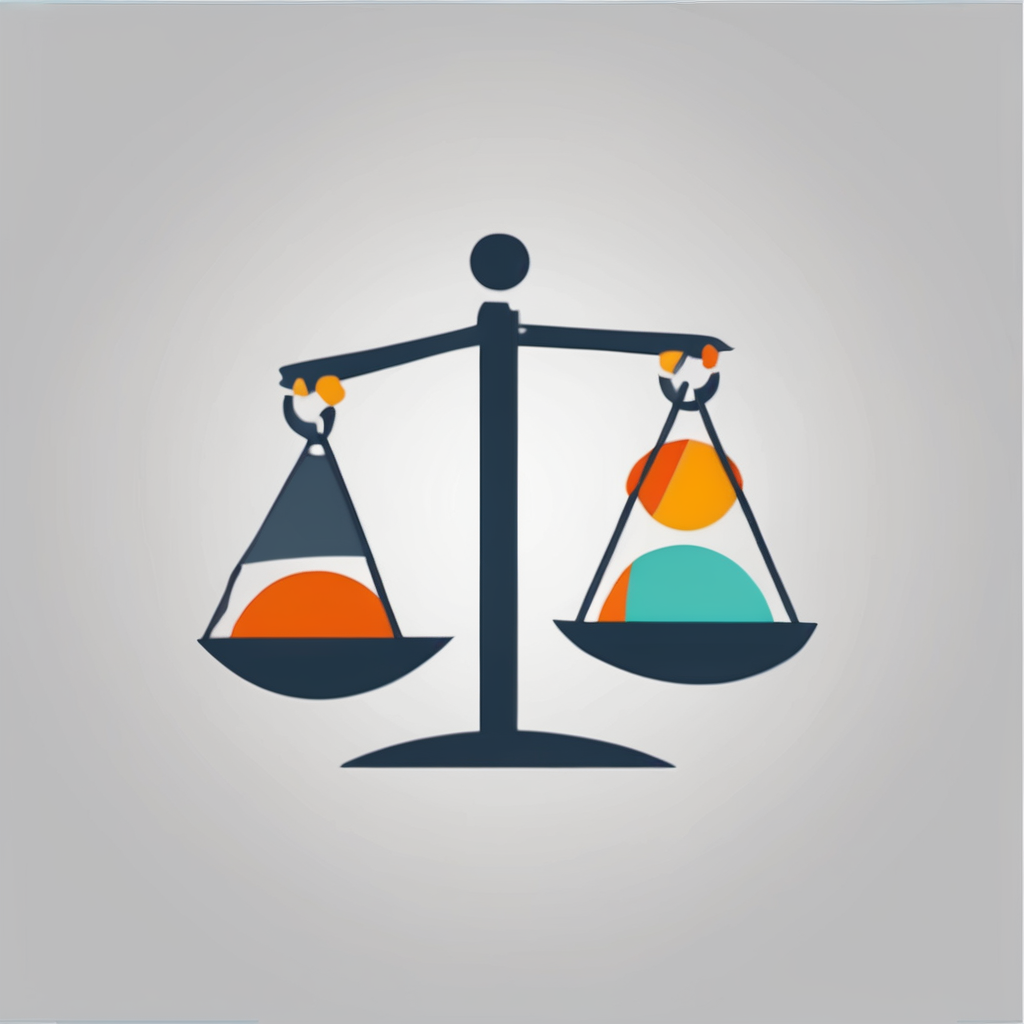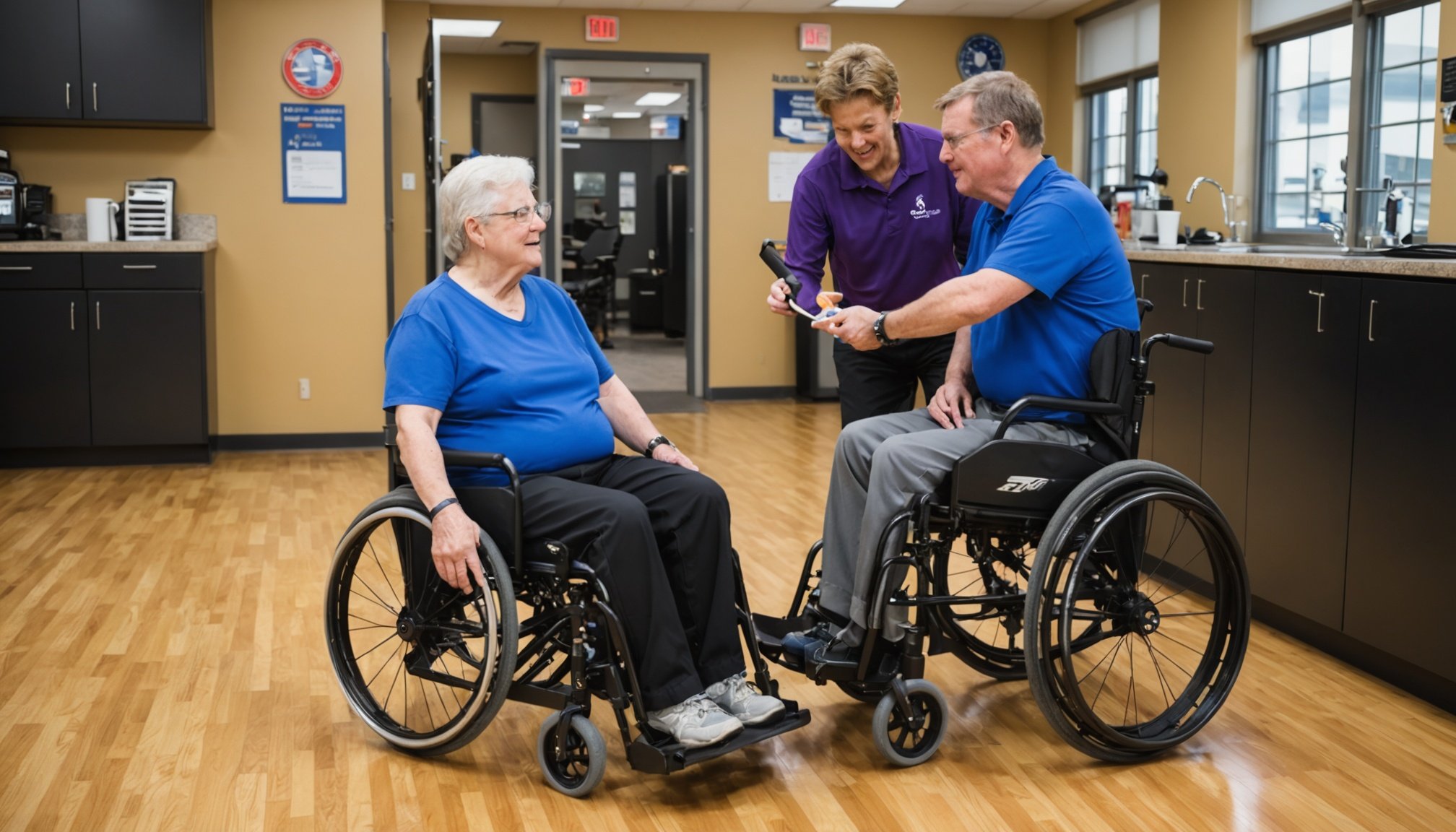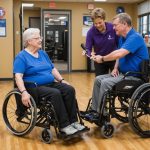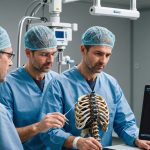Selecting the Right Adaptive Equipment
Choosing the appropriate adaptive tools is crucial to enhancing the lives of individuals with disabilities. The selection process involves several factors to ensure these tools effectively support personal independence. Primarily, one must consider the unique needs and abilities of the user. Adaptive equipment, such as wheelchairs, communication devices, or modified utensils, should cater to these specific requirements to enhance independence and daily functionality.
A personalized assessment conducted by a professional can significantly impact the effectiveness of the selected tools. This evaluation should encompass the user’s environment and capabilities, ensuring that the chosen adaptive equipment aligns with the individual’s lifestyle.
Additional reading : Top Strategies for Supporting Cognitive Wellness in Older Adults: Best Practices for Healthy Aging
Further, it is essential to explore various resources when selecting appropriate equipment. Numerous organizations and online resources offer guides and product reviews that can aid in this decision-making process. Consulting with experts or joining a community of users can provide helpful insights and recommendations based on experience.
Finally, keep in mind the evolving nature of technology and adaptive solutions, as new advancements continually enhance the capabilities of these tools, offering innovative solutions to meet individual needs effectively.
In parallel : Top Proven Strategies to Inspire Sedentary Adults to Embrace Active Lifestyles
Overview of Adaptive Equipment
Adaptive equipment plays a crucial role in promoting independence for individuals with disabilities. These tools are specially designed to assist people in performing daily tasks more easily, reducing the barriers they might face due to physical or cognitive limitations. The primary purpose of adaptive equipment is to enhance the quality of life by providing the necessary support to navigate daily life with greater ease.
There are numerous types of adaptive equipment available, each serving a unique need. From mobility aids like wheelchairs and walkers to communication tools such as speech-generating devices, the variety ensures individuals can find equipment that addresses their specific challenges. Other examples include hearing aids, custom utensils for eating, and home modifications like ramps and grab bars.
The importance of adaptive equipment cannot be overstated. It empowers users to engage more fully in social, educational, and occupational activities, fostering a sense of accomplishment and self-reliance. By removing obstacles to independence, adaptive equipment enables individuals to focus on their abilities rather than their limitations, ultimately encouraging a more inclusive society.
Overview of Adaptive Equipment
Adaptive equipment plays a pivotal role in the lives of individuals with disabilities, significantly contributing to their independence and daily functionality. At its core, adaptive equipment encompasses tools and devices specifically designed to assist individuals in overcoming various physical, sensory, or cognitive challenges. These adaptations enhance a person’s ability to perform tasks that might otherwise be difficult or impossible.
The purpose of adaptive equipment is to provide solutions tailored to individual needs, facilitating a more self-sufficient lifestyle. Such equipment might include aids for mobility like wheelchairs or walkers, communication devices for those with speech impairments, or utensils modified for easier use. Each type of equipment serves to eliminate barriers, promoting greater autonomy and participation in daily activities.
Various kinds of adaptive equipment exist, each catering to unique requirements. By enhancing capabilities, these tools foster improved quality of life. Among these are prosthetics, hearing aids, and custom-fitted seating solutions. The right adaptive equipment ensures a personalised approach to supporting individuals in navigating their environments effectively. Understanding the diverse range is crucial for users and caregivers in making informed decisions to boost independence and improve life quality.
Effective Usage Strategies
Understanding how to utilise adaptive equipment effectively ensures that individuals with disabilities achieve maximum independence. Employing insightful usage tips and training can significantly enhance user proficiency.
Daily Usage Techniques
Simple techniques can seamlessly integrate adaptive equipment into daily routines. For instance, ensuring devices are within easy reach can promote comfort and efficiency. Encouraging the user to maintain a consistent schedule for practising these routines is also crucial. Regular practice heightens familiarity, leading to improved ease of use and increased confidence.
Training and Skill Development
Training is vital for both users and caregivers. Programs tailored to specific equipment offer necessary skill development. Online resources and community centres frequently provide workshops to build competence. Incorporating these skills into daily activities reinforces learning and ensures adaptation to various contexts.
Troubleshooting and Adjustments
Recognizing common issues, such as device malfunctions or discomfort, equips users to make timely adjustments. Guides can provide solutions, but seeking professional assistance when faced with persistent issues is recommended. Professionals offer tailored adjustments, ensuring equipment functions optimally for the individual’s needs. This proactive approach aids in maintaining independence and enhancing overall user satisfaction.
Effective Usage Strategies
Maximising the utility of adaptive equipment involves more than just acquiring it; understanding effective usage tips is critical to optimising its benefits. These strategies encompass daily application, skill development, and troubleshooting methods.
Daily Usage Techniques
Incorporating adaptive equipment into daily routines can significantly enhance user efficiency and comfort. Simple techniques, like customising the equipment to better fit individual needs, can make everyday tasks smoother and more intuitive. Regular practice is encouraged to foster integration and routine comfort with the devices.
Training and Skill Development
Training plays a vital role in ensuring effective usage of adaptive equipment for both users and caregivers. Structured training programs and accessible resources can be invaluable. These programs help users develop necessary skills and caregivers acquire essential techniques for providing support. Integrating skill development into everyday activities helps solidify these new capabilities.
Troubleshooting and Adjustments
Users may encounter common challenges while using adaptive equipment. Being prepared with tips for adjustments ensures the equipment remains functional and effective. It’s important to recognise when professional assistance is needed for more complicated adjustments. This proactive troubleshooting approach ensures continuous, seamless adaptive equipment application, maximising benefits for users.
Personal Success Stories
By exploring user experience and impact stories, one can appreciate the transformative role adaptive equipment plays in lives of individuals with disabilities. Each personal account offers unique insights into how these tools significantly enhance independence and quality of life.
Stories of Empowerment
-
Jane, overcoming mobility challenges, found liberation through a specialised wheelchair. This impact story highlights her ability to participate in sports, a passion previously out of reach. Her expanded social circle and increased independence illustrate the profound benefits of adaptive equipment.
-
For Alex, adaptive utensils revolutionised his daily routine. By improving his ability to eat independently, these devices fostered increased self-sufficiency and confidence, leading to better overall well-being.
Diverse Experiences
Testimonials from various backgrounds underscore the diverse benefits of adaptive tools. These user experiences not only showcase different challenges but also demonstrate individual creativity in utilising equipment to its fullest potential.
Broader Impacts
Beyond practical benefits, such stories often reflect emotional growth and enriched social interactions. Witnessing impact stories can inspire others, highlighting adaptive equipment’s potential to redefine personal independence. These narratives offer valuable perspectives for future users deciding on adaptive solutions.
Personal Success Stories
Understanding the transformative impact stories of individuals who have embraced adaptive equipment provides invaluable insights into its potential. These testimonials, from diverse backgrounds, illustrate how such tools facilitate independence and enhance quality of life.
One compelling user experience is that of a young woman with mobility challenges who adopted a power wheelchair. With this adaptive equipment, she gained the freedom to explore her surroundings without assistance, participating fully in community events and social gatherings. Her story exemplifies the empowering capacity of adaptive devices to remove barriers and enable autonomous living.
Another impactful narrative involves a man with speech impairments who began using a speech-generating device. This advancement allowed him to communicate effectively in professional settings, significantly improving his career prospects. Such testimonials highlight the profound role of adaptive equipment in overcoming communication difficulties, fostering inclusion in various aspects of life.
These real-life examples underscore the significance of adaptive tools in enhancing quality of life. Whether through mobility, communication, or daily activities, personal success stories affirm the importance of choosing the right equipment and underscore the diverse ways it can transform lives.
Resources and Support
In the journey to enhance independence for individuals with disabilities, accessing additional resources and robust support systems is paramount. Achieving the best outcomes often involves leveraging a blend of comprehensive resources, community support, and professional expertise.
Comprehensive Resource Lists
To facilitate access to adaptive equipment, comprehensive guides and manuals can be invaluable. While individual needs dictate specific requirements, organizations often provide insights into reliable equipment suppliers and product descriptions. Non-profit organizations frequently offer curated lists of resources, helping navigate the various equipment options available.
Community Support and Networking
Connecting with a community is often crucial in promoting independence. Online platforms and local support groups provide spaces to engage with others facing similar challenges, fostering a sense of belonging. These networks allow users to share experiences, offer recommendations, and find emotional and practical support amidst communal understanding.
Professional Assistance
Engaging with professionals who specialize in adaptive equipment can significantly benefit users. Such experts provide critical support, from personal assessments to ongoing adjustments. Finding relevant experts often involves asking healthcare providers or consulting organizations akin to local rehabilitation centres. Collaborative approaches ensure adaptive equipment is optimized for each individual’s needs.
Resources and Support
To maximise the benefits of adaptive equipment, individuals with disabilities can explore a range of resources and support systems. These resources not only assist in selecting and using adaptive tools, but they also foster a sense of community and empowerment among users.
Comprehensive Resource Lists
Navigating the world of adaptive equipment can be daunting, but several comprehensive guides and manuals are available to assist users. These resources often provide detailed information on various equipment types, helping individuals make informed decisions based on their specific needs. Non-profit organisations also offer valuable resources and support, connecting users with suppliers and detailed equipment information.
Community Support and Networking
Connecting with a community of users and caregivers is invaluable in promoting true independence. Local and online support groups offer platforms for sharing experiences and advice. Engaging with these communities provides emotional support and practical insights, enhancing the overall user experience and reducing feelings of isolation.
Professional Assistance
Engaging professionals like occupational therapists or rehabilitation specialists can be crucial. They provide expert guidance in selecting and adapting equipment. Seeking professional assistance ensures the tools are tailored to individual needs, promoting optimal functionality and independence through collaborative efforts.
Resources and Support
Accessing a blend of additional resources and support systems is crucial for individuals with disabilities to enhance their independence. These resources range from comprehensive guides to connections with community networks and professional expertise.
Comprehensive Resource Lists
Exploring detailed guides and manuals is invaluable when navigating various adaptive equipment options. Many non-profit organizations curate lists of reliable suppliers and equipment descriptions tailored to individual needs. These resources assist users in understanding the available tools and help in making informed choices.
Community Support and Networking
Creating connections within a supportive community often plays a vital role in promoting independence. Online platforms and local support groups offer spaces for individuals to share experiences, gain insights, and find emotional support. These networks facilitate an environment of shared knowledge, fostering empowerment through communal understanding.
Professional Assistance
Engaging with professionals experienced in adaptive equipment can provide significant benefits. These experts offer personal assessments and ongoing support, ensuring that equipment is optimized for each user’s needs. Collaboration with healthcare providers and rehabilitation centres helps in finding relevant specialists, promoting a tailored, effective approach to enhancing independence.











